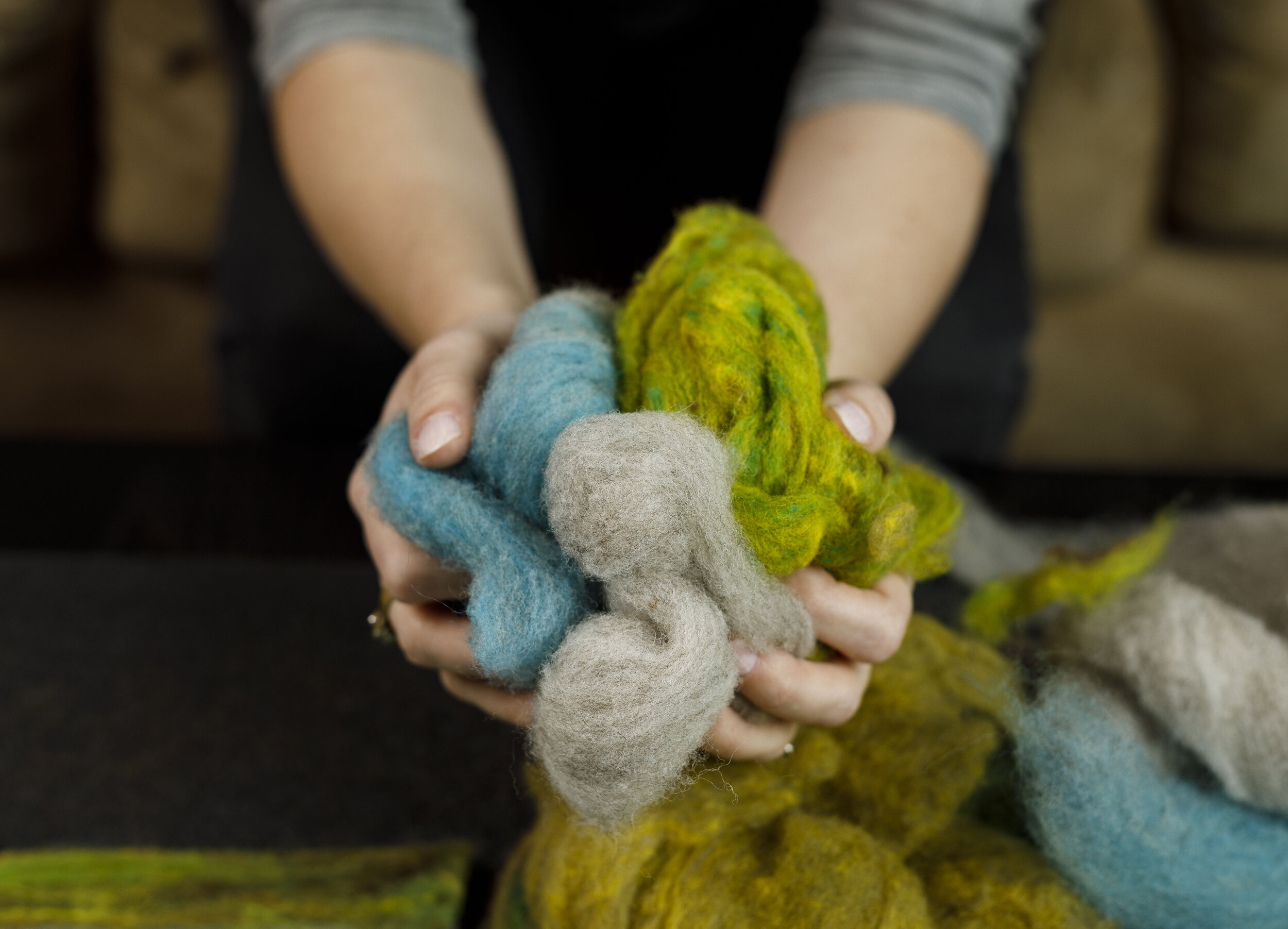My Favorite Needle Felting Resources
Here it is, you hit the jackpot! This is a comprehensive list of my favorite needle felting supply resources that has been in the making since I started felting in 2009. I will update this list regularly so check back in the future in case I’ve come across any new stores, websites, or fiber festivals.
And of course if you know of some awesome needle felting resources and want to share, please do so in the comments below!
Online suppliers:
I have been shopping at these first two websites since 2009 and get about 50% of my total yearly supplies from those two companies. They have consistent colors (and a huge assortment). They also carry needles, foam pads, and wool fabric. Kits are available as well. If you shop at the Felted Ewe, tell Tina that Once Again Sam sent you!
https://www.thefeltedewe.com/
https://www.weircrafts.com/
https://dorrmillstore.com/
Local Craft Stores:
Your local craft store may carry some needle felting supplies, but I find they're somewhat limited. They will most likely carry small 0.5 oz. bags of roving, which is fine for smaller projects. It’s a little more expensive to purchase this way, but if you’re just starting out and want to try out a few colors before you load up your craft room with pounds and pounds of roving, this is a perfectly fine way to go.
Craft stores often have combo packs of different roving colors and usually an assorted pack of needles as well. If you like to work from kits, they’re bound to have some of those too!
Regional Supply Stores:
Both of these stores have roving by the ounce, which is fantastic. You just pull off the amount of the color you want, they weigh it, and you pay for that amount. I wish I could buy all of my roving this way.
Asheville, North Carolina: Earth Guild
Newport, New Hampshire: Dorr Mill
Fiber Festivals:
If you happen to be in a state that has a wool festival, go check it out in person! It's well worth the drive. You can buy everything you'd ever dream of having for your needle felting journey, including a pet sheep if you’re so inclined (and I am, believe me…it’s just convincing my husband that we can have a sheep here in the suburbs).
Most of these festivals also have classes and demos available. I can’t say enough about them - they’re incredible! This is a quick video tour from my last time visiting the Southeastern Animal Fiber Fair (SAFF).
These are a few fiber fairs I have personally attended and highly recommend.
North Carolina: SAFF (Southeastern Animal Fiber Fair): https://saffsite.org/
North Carolina: Carolina Fiber Fest http://www.carolinafiberfest.org/
Maryland: The Maryland Sheep & Wool Festival https://sheepandwool.org/
Here’s a peek at some needle felting terminology, just so you know what you’re looking for (or googling). I wish I had know these terms when I first started out needle felting in 2009. I would have saved myself a lot of trouble!
Terminology:
Roving: wool fiber which has been cleaned, combed, and dyed. It’s used for the top layer in needle felting. Roving usually comes in a long “rope” that’s rolled into a ball.
Batt or Core fiber: wool fiber that has been cleaned and can be dyed (though it can also be natural since it’s going to be covered up with roving). It’s used for building up a 3D shape and is typically fluffier than roving, so it’s great for adding bulk.
Raw Fleece or “Locks”: unprocessed fiber that has maximum texture and curl.
Photo by Eli Warren
Types of Fiber:
You can felt with fiber from sheep, alpacas, and even rabbit fur & dog hair. My favorite fiber for needle felting is coarse sheep’s wool, specifically from Corriedale and Blue Faced Leicester breeds.
Tools:
Needles: felting needles are specialized because they have tiny inverted barbs which agitate and pull the fiber tight with each poke. I usually stick with a 38 gauge needles. If you want a fine finishing needle, a 42 gauge is a good option, but these break very easily. Needles can come in a spiral, triangle, or star shape. I highly recommend using a spiral shape - the barbs are oriented in a twist around the needle shaft, and it helps grab more fiber every time you poke the needle into your workpiece. It’s a tiny short cut, but I love it!
Needle Holders: You don’t technically have to have one, but they can be useful and make felting more comfortable. I use my single needle holder daily, my 4 needle holder regularly, and I have holders for 6, 12, and 24 needles as well, but don’t use them as often unless I’m working on something huge.
Feting pad: a dense foam worksurface you keep on your lap or table top while you felt. I recommend a felting pad that’s 2” thick. They come in many sizes - i have some that are 4x4, some that are 24x26, but I use my 8x10 the most. I also have a “felting pillow” I like from Bear Creak Felting & Design.
I teach many workshops a year (and virtual courses too!) so if I can help you in your needle felting journey, please reach out. I love this medium and I hope you do too! Be sure to checkout some of my process videos on YouTube so you can see how this magical medium works.






